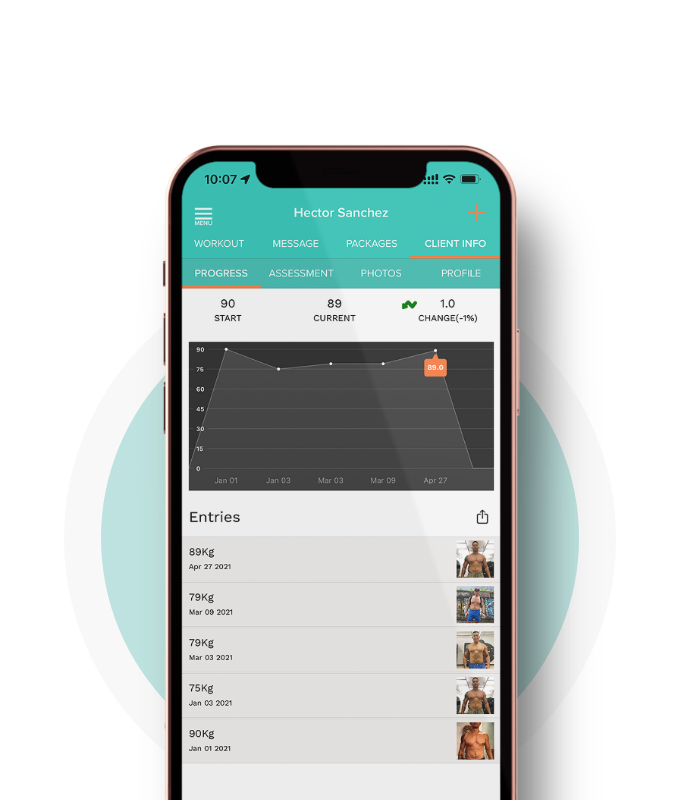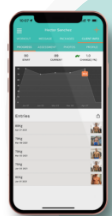Defying Age: Elevate Your Clients' Athletic Performance Beyond 30
As personal trainers, we often encounter clients who fear losing their speed, power, and athleticism as they age. This fear can be overwhelming, especially for those who have been active their entire lives. But here's the thing: age-related declines in speed and power are not inevitable. With the right training strategies, your clients can maintain and even enhance their athletic performance well into their later years.
Understanding Age-Related Declines
The stats don't lie: the average person loses up to 23% of their speed and power per decade past age 30 (1). By the time they hit 50, they could be 46% slower than they were at 30. This decline is primarily due to the loss of type 2x (fast-twitch) muscle fibers, which are essential for speed and power. But here's the kicker: research and real-world experience show that these declines are often more about reduced training intensity and volume than age itself.
The Power of Consistent Training
The principle of "use it or lose it" is crucial here. Many people naturally reduce their physical activity as they age, which leads to a decline in performance. But if these qualities are consistently trained, they can be preserved and even improved.
Here's what you need to integrate into your clients' training routines:
1. Sprints, Hops, and Bounds: These are fantastic for
developing explosive power and improving coordination. They mimic natural
sports movements and can be easily incorporated into training routines.
2. True Elastic Plyometrics: Exercises like jump rope or
rebound jumps focus on quick, elastic movements, enhancing the tendon's
ability to store and release energy efficiently.
3. Jumps in Various Forms: Broad jumps, box jumps, and
vertical jumps are excellent for building lower body power and improving
explosive strength.
4. Fast and Reactive Eccentrics: Training muscles to
contract quickly and forcefully is key for improving power. Exercises like
drop jumps and depth jumps are particularly effective.
5. Medicine Ball Throws: Great for developing upper body
power and coordination. They can be varied in many ways to target different
muscle groups.
6. Overspeed Sprints and Jumps: Training at a higher speed
than normal enhances the nervous system's ability to recruit muscles
quickly.
7. Explosive/Dynamic Effort Lifting: Movements like power
cleans, snatches, and push presses significantly improve overall power and
speed.
8. Anaerobic Power Training: Short bursts of
high-intensity work followed by rest periods are excellent for developing
anaerobic capacity and improving overall athletic performance.
Practical Implementation
For optimal results, integrate these exercises into your clients' regular training routines. Here's a suggested approach:
- 2-3 Days of Plyometrics/Power Exercises: Incorporate
a variety of the above exercises into every training session to ensure
consistent work on power and speed.
- 1-2 Speed and Power-Focused Sessions Per Week: Dedicate
specific sessions to speed and power training, including overspeed sprints,
reactive jumps, and dynamic effort lifting.
Success Stories and Personal Experiences
In my 17 years as a personal trainer, I've seen the incredible benefits of maintaining a focus on speed and power training. Take one of my past clients, for example. At 55, he improved his sprinting speed and jumping height beyond what he achieved in his 30s by incorporating a structured training regimen focused on these elements.
Personally, I've experienced significant improvements as well. At 48, I now move better and jump higher than I did during my time in the US Navy 20 years ago. This transformation is a testament to the effectiveness of these training principles. I've witnessed many clients achieve similar results, reinforcing the idea that age is not a barrier to maintaining and even enhancing athletic performance.
Tailoring Training for Different Clients
Every client is unique, and it's essential to tailor training programs to meet their individual needs and goals. Here are some tips for customizing these strategies:
- Assess Current Fitness Levels: Evaluate your
clients' current speed, power, and overall fitness before starting.
This helps create a baseline and track progress over time.
- Gradual Progression: Start with lower-intensity
exercises and gradually increase the difficulty as your clients become more
comfortable and proficient.
- Incorporate Variety: Keep training sessions interesting
and engaging by incorporating a wide variety of exercises. This prevents
boredom and ensures comprehensive development of speed and power.
- Monitor and Adjust: Continuously monitor your
clients' progress and adjust the training program as needed. This
ensures they are constantly challenged and making improvements.
Conclusion
Getting older doesn't mean accepting a decline in athletic performance. With the right training strategies, your clients can maintain and even enhance their speed and power well into later years. As personal trainers, we have the opportunity to help them achieve these goals and defy the conventional expectations of aging athletes.
By incorporating sprints, hops, bounds, plyometrics, jumps, medicine ball throws, overspeed training, dynamic effort lifting, and anaerobic power training into their routines, we can ensure they continue to move better, feel more powerful, and stay athletic as they age. Remember, it's not about the age on the calendar; it's about how you train. Let's empower our clients to keep pushing their limits and redefine what it means to age gracefully.
By: Hector Sanchez




